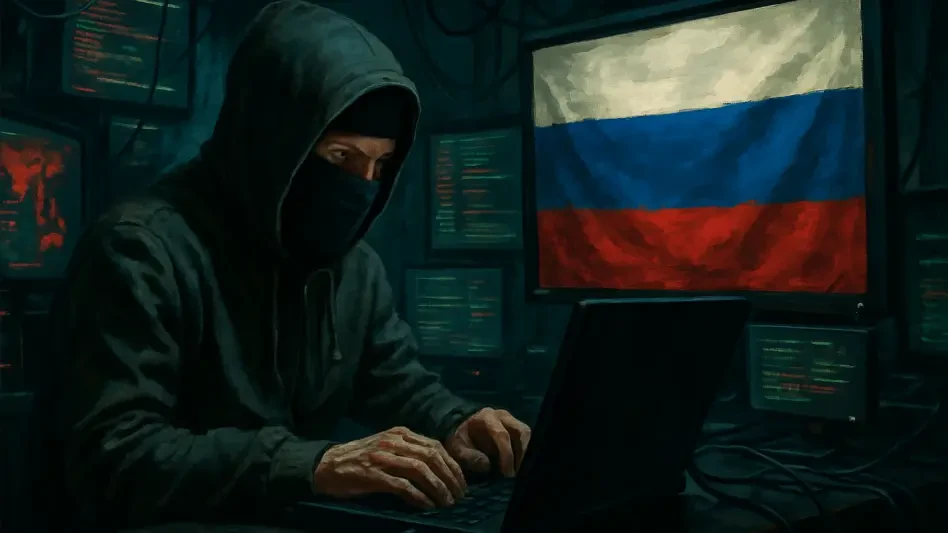In the intricate web of modern conflicts, cyber warfare’s dynamic landscape is dramatically reshaping geopolitical interactions. Particularly of interest is the rise of the pro-Russian hacktivist group NoName057(16), which has become notorious for its aggressive distributed denial-of-service (DDoS) campaigns. With over 3,700 unique internet-facing devices compromised since March 2022, this hacktivist group has laid bare the intensifying hybrid warfare tactics used in Europe. Their targets span governmental and public sector entities in nations critical of Russia’s military actions in Ukraine. This pattern highlights the increasingly strategic role of cyber threats in geopolitical struggles and underscores the evolving cyber dimension of international conflicts.
Analyzing NoName057(16)’s Operational Strategies
Elevated DDoS Tactics Revealing Sophisticated Tech
NoName057(16) has innovatively employed a DDoS platform known as DDoSia, executing campaigns with remarkable rapidity and frequency. By targeting an average of 50 hosts daily, the group exhibits an operational capability that surpasses many of its peers. This platform integrates a multi-tier command-and-control (C2) framework, providing both flexibility and stealth. Critical to its resilience are the Tier 1 C2 servers, which are cycled every nine days to minimize detection risks, whereas Tier 2 assets are fortified with access control lists to sustain continuous operation. This meticulous setup illustrates a considered approach, combining technology with strategic foresight to maintain an elusive presence in the cyber domain.
Further examining the group’s structure, it becomes evident that their cyber offensive strategy extends beyond mere technological prowess. Their decentralized recruitment through a Go-based DDoS client leverages a network of online volunteers, making participation accessible even for those with minimal technical skills. These volunteers, registered via Telegram, use User Hash credentials to access encrypted attack instructions, showcasing an almost crowdsourced approach to cyber warfare. By adopting this model, NoName057(16) can rapidly orchestrate large-scale attacks, underlining the unconventional yet highly effective nature of their campaigns.
Navigating Law Enforcement Countermeasures
Despite global efforts to curb cyber threats, NoName057(16) seems to navigate law enforcement scrutiny with considerable agility. For instance, even following Operation Eastwood—an international move in July 2025 aimed at deterring their activities—the group has sustained momentum. The hacktivists continue disseminating propaganda via Telegram, illustrating an undeterred commitment to their political agenda. This persistent activity demonstrates the challenges defenders face in dismantling a decentralized operation that not only involves technical components but also ideological motivations that drive the group’s members and supporters.
For stakeholders tasked with defending against such threats, the resilience of NoName057(16) underscores the need for adaptive strategies. Law enforcement actions appear only partially effective against groups committed to non-traditional warfare tactics. As a result, traditional methods of policing may require recalibration, with a stronger focus on understanding and disrupting the motivation and operational logistics of these entities. Monitoring digital propaganda channels can also provide insights into potential upcoming threats and facilitate preemptive defensive measures.
Implications for Cybersecurity and Protective Measures
Strategic Recommendations for At-Risk Nations
Analyses from Insikt Group highlight the pressing need for NATO-aligned countries to reassess their cybersecurity defenses. The nature of modern warfare, particularly involving hacktivist groups like NoName057(16), demands robust technical defenses while enhancing situational awareness to identify potential threat patterns. Focused attention must be given to not only direct attacks but also peer-targeted assaults that could signal emerging threats. Such strategic adjustments are vital for maintaining national security and protecting critical infrastructure from digital disruptions orchestrated by cyber actors serving geopolitical agendas.
Addressing these challenges requires a multifaceted approach. Organizations must strengthen traditional defenses with advanced detection mechanisms capable of identifying atypical traffic patterns indicative of DDoS activities. Furthermore, leveraging threat intelligence to predict and prevent attacks plays a crucial role. Proactive risk management strategies must be developed to stay ahead of persistent cyber adversaries. Training security teams to quickly adapt to evolving threat landscapes will bolster national cyber readiness in the face of increasingly sophisticated attackers.
Evolving Nature of Cyber Warfare and Modern Conflict
In today’s complex network of global conflicts, the sphere of cyber warfare is profoundly changing the manner in which nations interact on the geopolitical stage. Of particular interest is the emergence and alarming activities of the pro-Russian hacktivist group NoName057(16). This group has gained notoriety due to its aggressive distributed denial-of-service (DDoS) attacks, compromising over 3,700 unique internet-facing devices since March 2022. This hacktivist faction exposes the escalating tactics of hybrid warfare that are prevalent in Europe, targeting governmental and public sector bodies within countries that criticize Russia’s military maneuvers in Ukraine. This trend underscores the crucial and strategic involvement of cyber threats in geopolitical engagements and highlights how the cyber dimension in international conflicts continues to evolve and intensify. Such actions reflect the growing importance of cybersecurity in military strategies and the shifting nature of warfare in the digital age.








